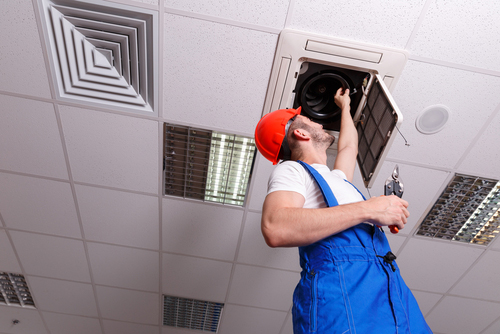As multiple studies suggest, Americans are spending more time indoors. This makes testing indoor air quality on a regular basis crucial to our wellbeing.
There are many new studies emerging detailing the health concerns linked to poor indoor air quality.
If you are anything like the average American, you probably spend near 90% of your time inside. With this in mind, we can all agree that monitoring indoor pollutants should be a concern.
To make matters worse, not only do we spend more time indoors, but also the actual quality of indoor air in general is more saturated with pollutants than the air outside of a building.
Unfortunately, most people give their indoor air quality very little thought.
3 Major Types of Contaminants
If our indoor air is so polluted, where do these pollutants come from? What are they? How can I find out if my home has them?
There are three major types of contaminants that are often present in your home; biological, chemical, and combustible pollutants.
These pollutants range in severity from causing mild eye irritation to being known carcinogens. Pollutants such as dust mite and dander, may be more an annoyance than a concern unless you or a loved one suffer from a sever allergy.
However, there are many pollutants that can be silently building up in your body as you breathe them in day and night that are much more dangerous, such as mold and VOC’s (Volatile Organic Compounds).
Our breathing air can be compromised by both organic and synthetic compounds and can be found just about anywhere. That new bookshelf you got for a bargain price might be made of particleboard that releases a very common VOC into the air, formaldehyde.
The candle you burned yesterday, the makeup you used this morning, and even some of your medications contain formaldehyde.
Are They Present In Your Home?
If you have an older home, your walls may contain lead based paint. If you have a newer home there may be VOC’s in the insulation and particleboard.
Your new carpeting and furniture, and even your dry cleaned clothes may be full of compounds that wreck havoc on your respiratory system.
How About When you Clean Your Home?
If you are still using conventional cleaning agents and disinfectants to try to keep your home healthy you can actually be introducing toxins into the air while cleaning. If only there was a way to know for sure.
There is a lot of bad news concerning our indoor air quality as it stands, but we aren’t powerless. There is something pretty simple we can do to know for sure if there are unwanted tenants taking residence in the air in our homes. Test it.
Testing the air can be as easy as purchasing a kit, following the instructions, and waiting for the results. Home test kits are fairly simple to use and they are fairly accurate – if you know how to use them.
Getting accurate results requires a familiarity with air testing to know exactly where to place the kits to get a consistent result.
Testing Your Indoor Air Quality Yourself
For an accurate reading on your home air quality its best to call a professional. If you have done some sleuthing and think you know of a problem area in your home, testing yourself can be a good way to know whether there’s a need for concern.
For example, say it’s been raining quite a bit lately and you smell a musty odor in the laundry room. You have a pretty good idea you may have an issue with mold. Mold is something you don’t want to let get out of hand. Now may be a good time to get a home testing kit of mold and see if you do indeed have a mold issue.
If the test results come back and prove you are correct, now would be the time to call an indoor air quality specialist to come and give you an accurate reading on the scope of the mold problem.
Your IAQ (Indoor Air Quality) Specialist will be able to give you some real solutions to fix the problem areas as well as check for any other dangerous contaminants in the air.
However, if you go into your laundry room after smelling a musty odor and look behind the washing machine and actually see mold, a test at home kit would not be a good option. The mold spores present in the air would give a false reading.
When Its Best to Call In the Pros
At this point it would be best to call an IAQ specialist and skip the home kit. With so many variables and so much at stake, calling an IAQ specialist to check your homes air health is a wise decision.
Choosing the right person for the job can be a challenge, but decide on the scope of your project, verify that your consultant has the proper credentials, and schedule an appointment as soon as possible. You’ll be breathing easy and glad you made the call.

